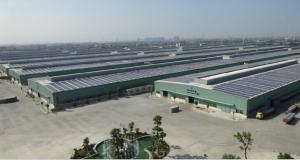Undersizing Solar Inverter
Undersizing Solar Inverter Related Searches
100w Solar Panel With Inverter Best Solar Panel Inverter 5000 Series Cast Aluminum Plate Portable Solar Panel Inverter First Solar Series 6 Module 12 Volt Solar Panel Inverter Plastic Solar Lanterns Buy Solar Panel Inverter Solar Panel Inverter Cost Solar Panel Without InverterHot Searches
Type Of Inverter For Solar Types Of Inverter For Solar Used Solar Inverter For Sale Inverter Size For Solar System Solar Edge Inverter For Sale 5kw Solar Inverter For Sale Solar Inverter For Sale Solar Inverter For Battery Solar Inverter For Split Ac Solar Inverter For Laptop Solar Inverter For Fridge Solar With Inverter Price Solar Inverter With 2 Battery Solar Inverter Price In China Best Solar Inverter In China Solar Inverter Price In Dubai Solar Inverter Price In Uae Solar Inverter Price In Kenya Solar Inverter Price In Kerala Solar Hot Water Collectors For SaleUndersizing Solar Inverter Supplier & Manufacturer from China
Okorder.com is a professional Undersizing Solar Inverter supplier & manufacturer, offers integrated one-stop services including real-time quoting and online cargo tracking. We are funded by CNBM Group, a Fortune 500 enterprise and the largest Undersizing Solar Inverter firm in China.Hot Products
FAQ
- A solar inverter handles variations in solar panel tilt and orientation by adjusting the power output to maximize the energy harvest. It continuously monitors the performance of the solar panels and adjusts the voltage and current levels to optimize the conversion of sunlight into usable electricity. This allows the inverter to accommodate changes in tilt and orientation, ensuring the system operates at its highest efficiency regardless of the panel position.
- Yes, a solar inverter can be remotely monitored and controlled. Many modern solar inverters are equipped with advanced monitoring and communication capabilities, allowing them to be connected to a network and accessed remotely. This enables users to monitor the performance of their solar system, track energy production, and make adjustments or troubleshoot issues from a remote location using a computer, smartphone, or other devices.
- Yes, a solar inverter can be used for off-grid systems. In fact, it is an essential component of off-grid solar systems as it converts the DC (direct current) electricity generated by the solar panels into AC (alternating current) electricity that can be used to power household appliances and other electrical devices.
- A solar inverter typically handles shading or partial obstruction of solar panels through the use of Maximum Power Point Tracking (MPPT) technology. This technology allows the inverter to optimize the power output of the panels by constantly adjusting their operating point to the maximum power available. When shading or obstruction occurs, the inverter automatically adjusts the operating voltage and current of the panels to minimize the impact and maximize the overall energy yield.
- A solar inverter typically has built-in protective measures, such as surge protection devices and grounding systems, that help safeguard against lightning strikes. These protective measures divert the high voltage surge caused by lightning away from the inverter, ensuring its safety and preventing damage to the solar power system.
- When choosing a solar inverter, it is important to look for certifications such as IEC 62109 or UL 1741. These certifications ensure that the inverter meets necessary safety and performance standards. Additionally, certifications like ISO 9001 indicate that the manufacturer follows quality management systems.
- Yes, a solar inverter can be used in areas with high levels of dust or pollution. However, it is important to regularly clean and maintain the inverter to ensure optimal performance and prevent any damage caused by dust or pollution accumulation.
- The maximum DC input voltage for a solar inverter typically depends on the specific model and manufacturer. However, in general, the maximum DC input voltage for most solar inverters is around 600 to 1000 volts. It is important to consult the product's specifications or contact the manufacturer to determine the exact maximum DC input voltage for a specific solar inverter model.















































